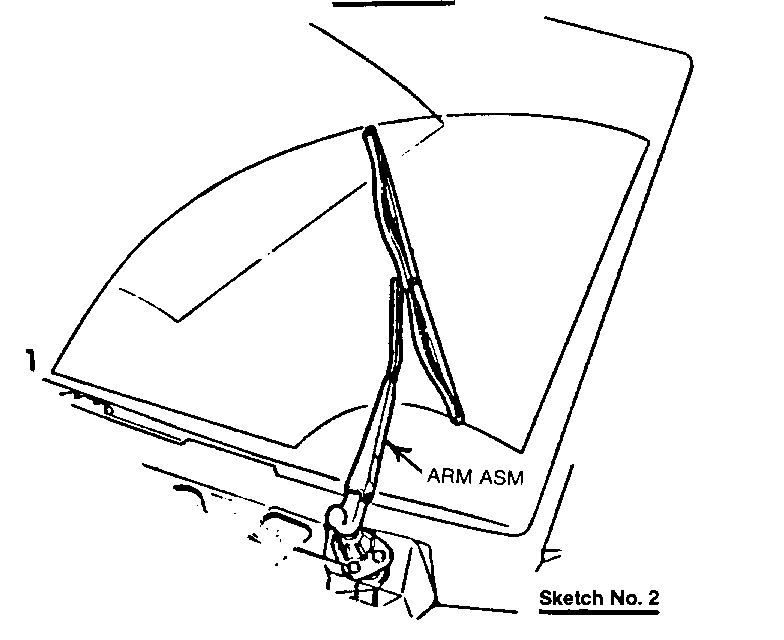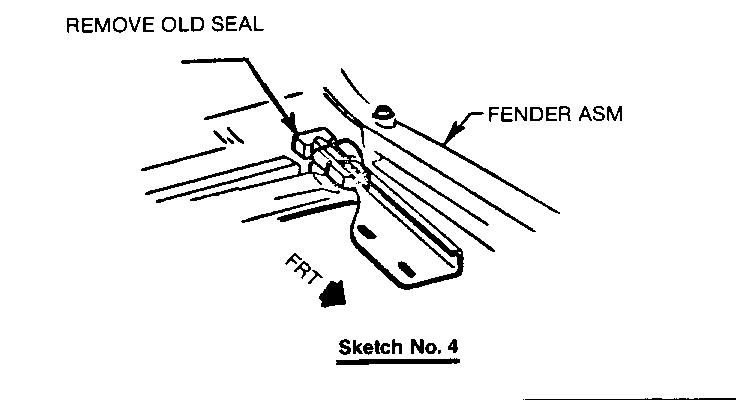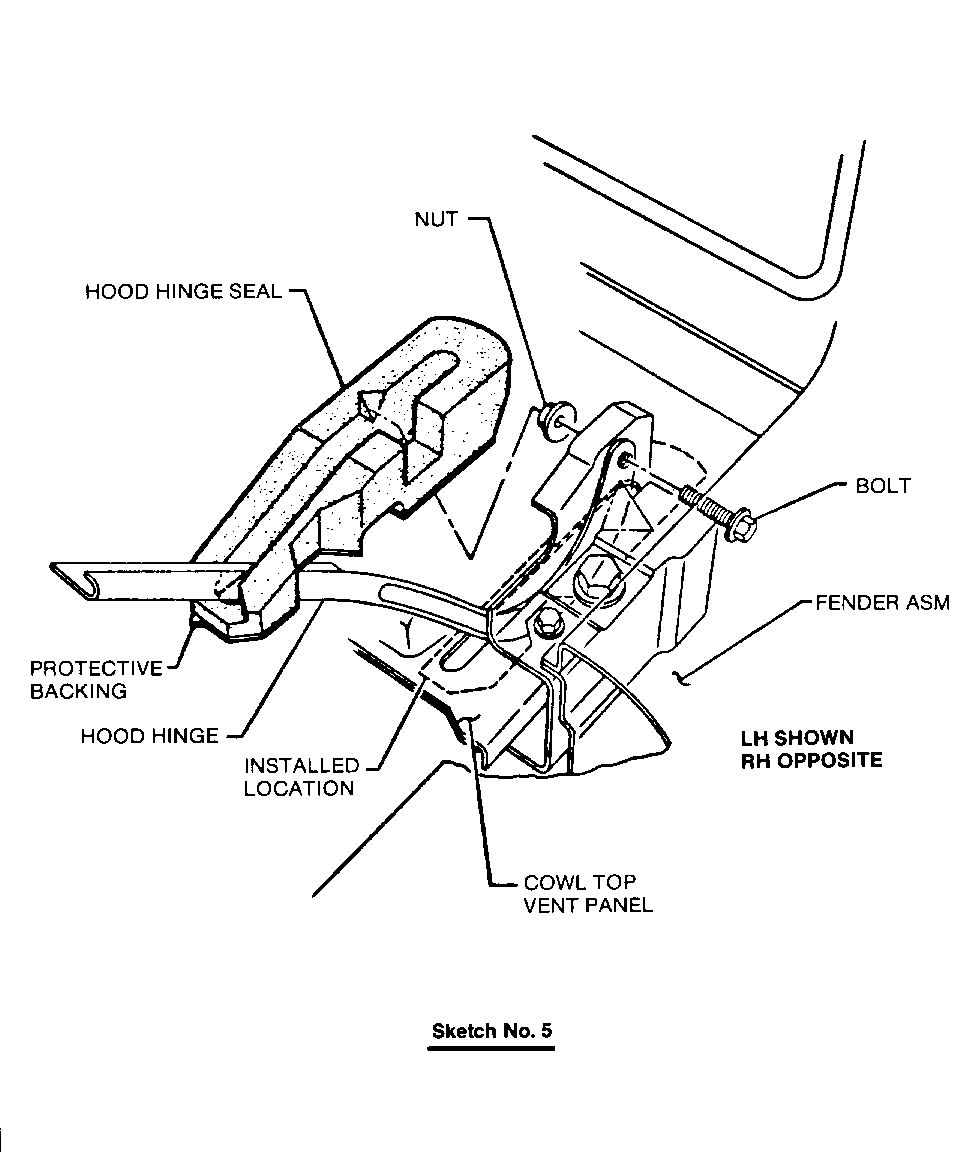WATER LEAKS FROM VENT DOORS HOOD HINGE SEALS INSTALLATION

MODELS: 1982-83 S/T TRUCKS
Water entry into the passenger compartment from the vent doors on subject vehicles may be caused by mispositioned or torn hood hinge seals. This water intrusion can be the result of the hood hinge seal not diverting rain water as intended and allowing it to fall over the vent door and into the air stream.
A revised production seal has been released for vehicles built after February, 1983. This seal is now available for service.
Parts information
14067277 seal left hand 14067278 seal right hand
Installation Procedure:
NOTE: Install seals one side at a time.
1. Remove windshield wiper arm assemblies. (Sketch No. 2)
2. Open hood and remove cowl rubber molding.
3. Remove windshield washer spray tube.
4. Remove cowl vent panel. (Sketch No. 3)
5. Remove hood hinge bolt. Care should be taken to hold the hood until the seal is in place. (Sketch No. 1)
6. Remove old hinge seal. (Sketch No. 4)
7. Clean the area of the old seal of all residue, dirt, etc.
8. Remove the backing paper from the new seal and position on the vehicle by slipping under the hood hinge. The seal should be pressed securely to the surface of the plenum panel to cause total wet-out of seal adhesive. (Sketch No. 5)
9. Reassemble cowl panel, hood, and wipers.





General Motors bulletins are intended for use by professional technicians, not a "do-it-yourselfer". They are written to inform those technicians of conditions that may occur on some vehicles, or to provide information that could assist in the proper service of a vehicle. Properly trained technicians have the equipment, tools, safety instructions and know-how to do a job properly and safely. If a condition is described, do not assume that the bulletin applies to your vehicle, or that your vehicle will have that condition. See a General Motors dealer servicing your brand of General Motors vehicle for information on whether your vehicle may benefit from the information.
